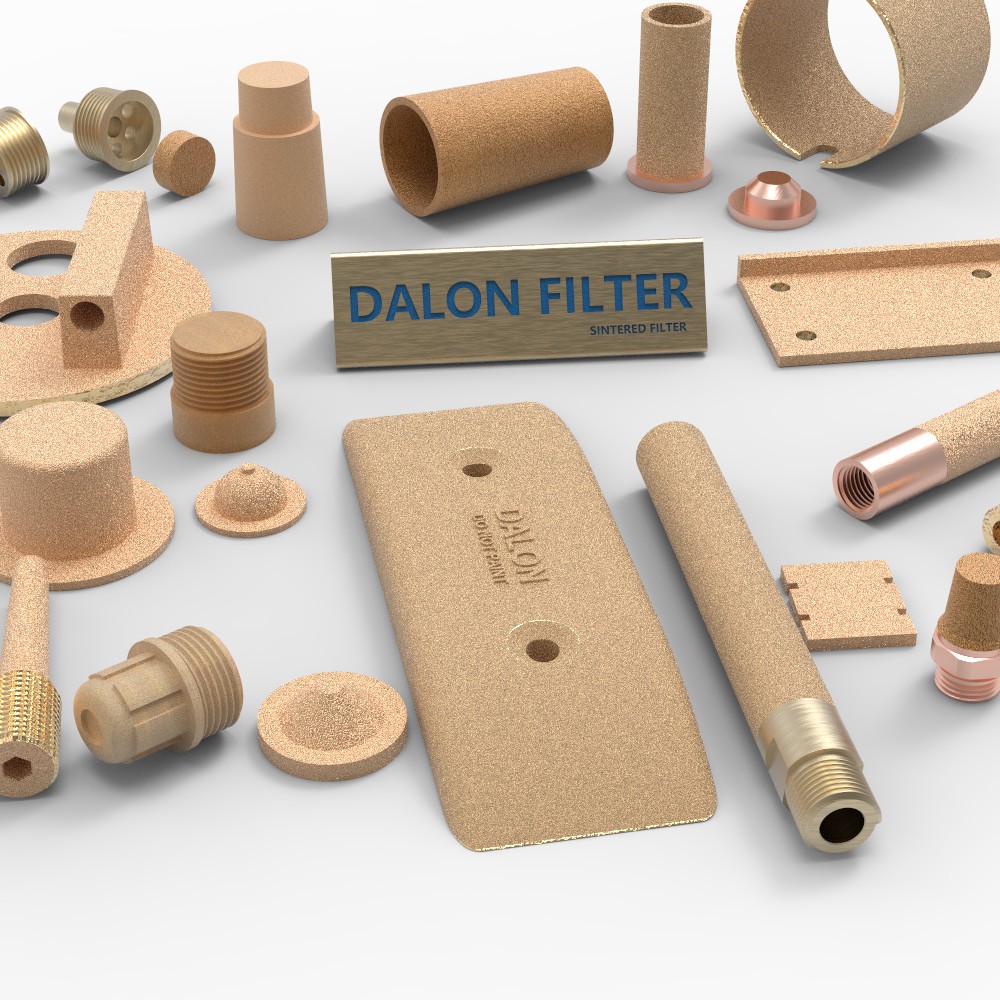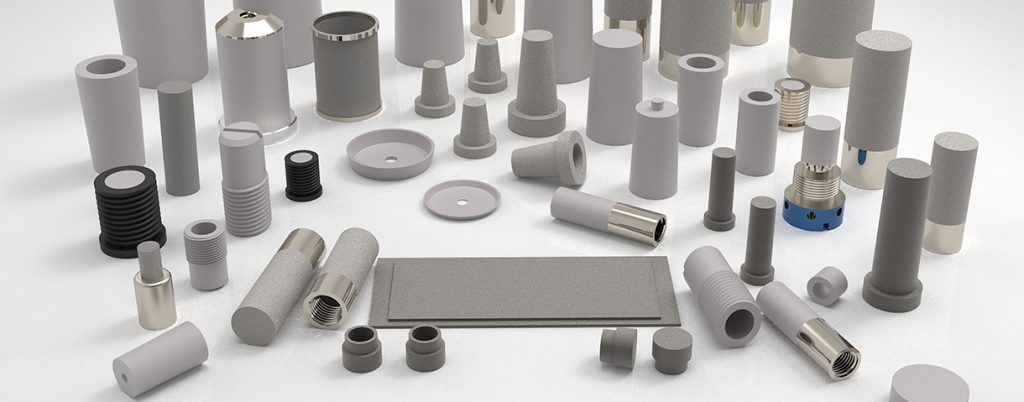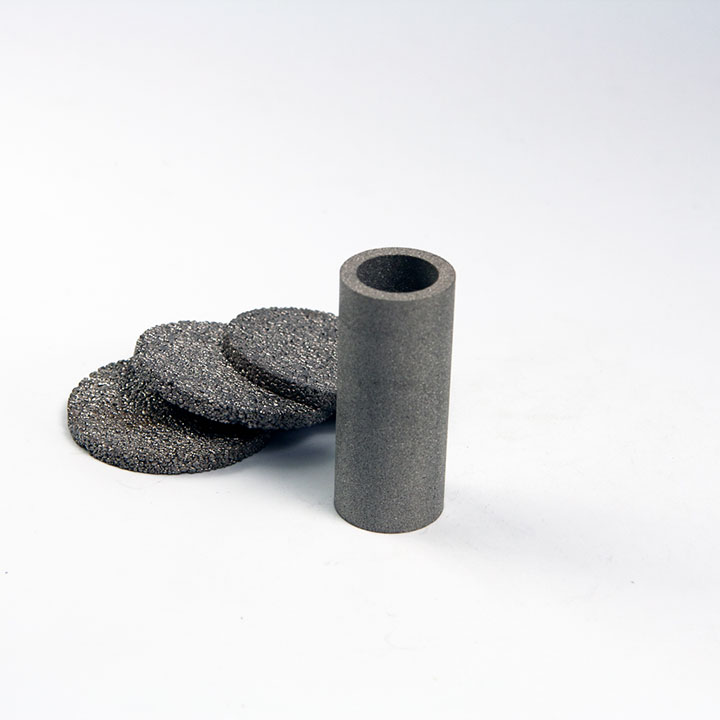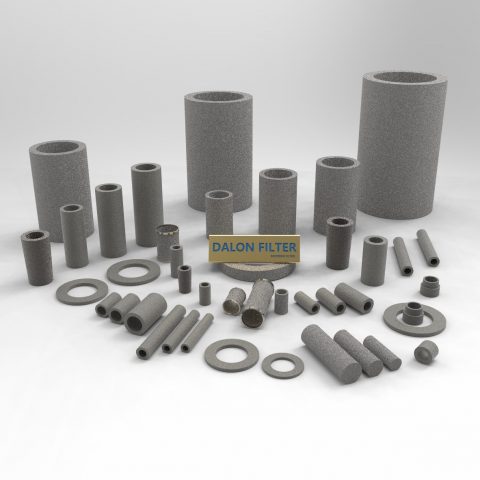Why Filter Material Matters
In industrial filtration, choosing the right filter material is just as important as selecting the right pore size or housing configuration. Sintered metal filters have become the go-to solution for reliable, high-strength, and reusable filtration across industries like chemical processing, aerospace, food and beverage, automotive, and hydraulics.
But one of the most common dilemmas engineers face is whether to choose sintered bronze or sintered stainless steel (SS) filters. Both offer unique advantages, yet they serve very different applications depending on the process environment.
This article provides a detailed head-to-head comparison of these two popular filter types, covering everything from material properties and operating limits to filtration performance, cost, and cleaning methods.


Section 1: What Are Sintered Metal Filters?
Before comparing materials, it’s important to understand what sintered metal filters are.
Sintered filters are rigid, porous filter elements produced using powder metallurgy. Metal powder is compacted into a shape and sintered (heated below melting point) to bond particles and create a network of interconnected pores. These pores allow fluid or gas to pass through while capturing particulates inside the matrix.
There are two main types of sintered metal filters:
- Sintered Bronze Filters – Made from copper-tin alloy powder
- Sintered Stainless Steel Filters – Made from 304, 316L, or specialty stainless steel powders
Both filters are cleanable, pressure-resistant, and reusable, but their performance varies significantly depending on conditions.
Section 2: Material Composition & Physical Properties
1. Base Material
| Property | Sintered Bronze | Sintered Stainless Steel |
|---|---|---|
| Composition | 90% Copper, 10% Tin (or 85/15 variants) | Austenitic Stainless Steel (304, 316L, 904L) |
| Magnetic | Non-magnetic | 316L: Non-magnetic, 304: Slightly magnetic |
| Density | ~8.8 g/cm³ | ~7.9 g/cm³ |
| Appearance | Dull brown/golden | Metallic silver/grey |
Implication: Bronze has excellent thermal conductivity and is often chosen for applications where heat dissipation or self-lubrication is needed. Stainless steel, however, excels in corrosive or high-pressure environments.
Section 3: Temperature and Corrosion Resistance
| Feature | Sintered Bronze | Sintered Stainless Steel |
|---|---|---|
| Temperature Limit | Up to 250°C (482°F) | Up to 900°C (1652°F) |
| Corrosion Resistance | Limited: Not suitable for acidic environments | Excellent: pH range 1–14 (especially with SS316L or 904L) |
| Oxidation Resistance | Moderate | High |
Implication: Bronze filters are best for neutral or mildly oily environments, whereas stainless filters are mandatory for acidic, alkaline, or high-temperature processes.
Section 4: Filtration Performance Comparison
| Feature | Sintered Bronze | Sintered Stainless Steel |
|---|---|---|
| Pore Size Range | 5–100 µm | 0.5–100 µm |
| Porosity | 30–50% | 30–70% |
| Filtration Type | Depth | Depth (multi-layer designs possible) |
| Dirt-Holding Capacity | Moderate | High (especially in dual-layered formats) |
| Cleanability | Backflush + solvents | Backflush, CIP, acid soak, thermal bake-out |
Stainless steel filters allow finer pore sizes and deeper filtration, making them better for critical or high-purity applications such as pharmaceutical gases, semiconductor cleanrooms, or molten metal filtration.
Section 5: Mechanical Strength & Pressure Ratings
| Property | Sintered Bronze | Sintered Stainless Steel |
|---|---|---|
| Tensile Strength | 50–150 MPa | 150–500 MPa |
| Pressure Resistance | 5–10 bar (72–145 psi) | 10–150 bar (145–2175 psi) |
| Impact Resistance | Moderate (ductile) | High (rigid and durable) |
For high-pressure systems, especially in aerospace hydraulics, process reactors, or steam lines, sintered stainless steel is the clear winner.
Section 6: Cost and Lifecycle
| Feature | Sintered Bronze | Sintered Stainless Steel |
|---|---|---|
| Upfront Cost | Lower | Higher |
| Service Life | 6 months – 2 years | 5 – 10+ years |
| Maintenance Cost | Moderate | Low (clean-in-place capability) |
Although bronze filters may seem attractive due to their lower price, stainless steel filters often deliver better ROI due to their longevity and versatility.
Section 7: Typical Applications
🟤 Sintered Bronze Filter Use Cases
- Compressed Air Systems – Captures oil aerosols, dust, and moisture
- Pneumatic Valves & Cylinders – Prevents clogging, self-lubricating
- Automotive – Fuel vapor recovery systems, intake filters
- Hydraulics (low-pressure) – Oil and water separation
- Silencers – Reduces exhaust noise in air tools
⚪ Sintered Stainless Steel Filter Use Cases
- Chemical Processing – Filters acids, solvents, alkaline solutions
- Pharmaceutical Production – Sterile filtration of gases and WFI
- Food & Beverage – CO₂ filtration, CIP systems
- Molten Metal Casting – Removes slag and inclusions
- Semiconductor Cleanrooms – Ultra-pure gas lines (ISO Class 0)
Section 8: Maintenance & Regeneration
| Feature | Sintered Bronze | Sintered Stainless Steel |
|---|---|---|
| Basic Cleaning | Compressed air, mild solvents | Ultrasonic, acid/base CIP |
| Thermal Regeneration | Not recommended | Yes (up to 800°C) |
| Sterilization | Not autoclave-compatible | Fully autoclave-compatible |
| Regeneration Frequency | 2–3 times typical | 100+ cycles possible |
Stainless filters provide more robust maintenance options, especially in environments requiring steam, heat, or aggressive chemical cleaning.
Section 9: Limitations and Considerations
When to Avoid Bronze:
- Presence of acids/ammonia/chlorides
- High temperature (>250°C)
- Sterile environments (bronze may oxidize or shed particles)
When to Avoid Stainless:
- Where low cost is the primary constraint
- Where high thermal conductivity is needed
- Non-critical applications like basic pneumatic exhausts
Section 10: Real-World Comparison Example
Use Case: Factory Compressed Air System
| Specification | Sintered Bronze Filter | Sintered SS316L Filter |
|---|---|---|
| Line Pressure | 7 bar | 10 bar |
| Temp | 25°C | 80°C |
| Contaminants | Dust + Oil | Oil + Acidic Moisture |
| Environment | Indoor, Neutral pH | Chemical Plant, Acid Vapors |
| Lifespan | 1 Year | 5+ Years |
| Cost | $ | $$ |
In this scenario, bronze is sufficient for general factory air. But in chemical air or steam, SS316L is essential for safety and performance.
Section 11: Summary Comparison Table
| Feature | Sintered Bronze | Sintered Stainless Steel |
|---|---|---|
| Best For | Pneumatics, low-pressure air/oil | High-temp, corrosive, sterile |
| Pore Size Range | 5–100 µm | 0.5–100 µm |
| Max Temp | 250°C | 900°C |
| Corrosion Resistance | Limited | Excellent |
| Cleaning | Solvent wash | Solvent + Acid + Thermal |
| Cost | Low | Higher (but longer life) |
| Reusability | Limited | Extensive |
FAQ Section
Q1: Can I use sintered bronze in food-grade applications?
A: Not recommended unless specially coated. Stainless steel (316L) is preferred for food, beverage, and medical uses.
Q2: Is sintered stainless steel always better?
A: No. For non-aggressive, low-temp environments, sintered bronze is more cost-effective.
Q3: Which filter is easier to clean?
A: Stainless steel is more versatile—it can be cleaned thermally, chemically, or with ultrasonic assistance.
Q4: Can I use both in the same system?
A: Yes, bronze for non-critical pre-filtration; stainless for fine/sterile or chemical-stage filtration.
Which Should You Choose?
Sintered bronze filters are excellent for cost-effective, low-pressure applications like pneumatic systems and air exhausts. They’re easy to use, self-lubricating, and adequate in neutral environments.
Sintered stainless steel filters, however, offer superior strength, resistance, and reusability for high-performance industries like chemical processing, biotech, high-pressure hydraulics, and thermal applications.
Your choice should be guided by the following:
- What is the chemical nature of the fluid/gas?
- What is the operating temperature and pressure?
- Do you require clean-in-place (CIP) or sterilization?
- What are your lifecycle cost priorities?
For help selecting the optimal sintered filter material for your system, visit our product page to explore specifications or request a customized quotation today.



